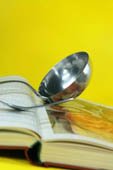
Purpose
To determine whether or not eating breakfast helps students to perform better on tests.
Additional information
You will need several students, around the same age and divided equally between genders to volunteer for this experiment. You will also need the teacher’s permission and help to gather the student volunteers’ scores after the tests have been administered. The hypothesis is that the student volunteers will do better on the second test after they have eaten a complete breakfast than they did on the first test before which they skipped eating breakfast.
Sponsored Links
Required materials
- Student volunteers
- Journal or notebook
Estimated Experiment Time
A few days to several weeks, depending on how much time is in between each test.
Step-By-Step Procedure
- 1. Find out when your teacher is having two separate tests and record the date.
- 1. On the day of the first test, ask each student volunteer to skip eating breakfast.
- 3. When the tests have been graded, ask the teacher to let you record the students’ scores.
- 4. On the day of the second test, ask each student volunteer to eat a complete breakfast with plenty of protein, carbohydrates and dairy.
- 5. When the second tests have been graded, ask the teacher to let you record the students’ scores.
Note
It is helpful if the two different tests are on a similar subject. They don’t have to be, but this may affect the students’ scores because many students are naturally better at some subjects than they are others. If both tests are on a similar subject, that particular variable is eliminated.
Observation
After each student volunteer’s scores have been recorded for both tests, create a graph that depicts whether the students did better on the first test without having eaten breakfast or whether they did better on the second test after having eaten a complete breakfast.
Result
If the hypothesis is correct, the student volunteers will have scored better on the second test after they had eaten breakfast. The scores on the first test would be lower than the scores on the second. Use the graph to demonstrate how each score differed from test to test and how the scores differed as a whole. On average, how much higher were the scores on the second test? How much lower were the scores on the first test?
Sponsored Links
Take a moment to visit our table of Periodic Elements page where you can get an in-depth view of all the elements,
complete with the industry first side-by-side element comparisons!